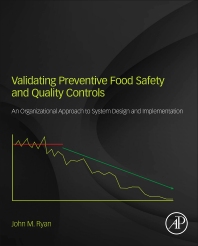Tips to Combating Food Fraud

Food fraud is an increasing concern for cold food processors as the food supply becomes more global. In addition, as more brokers and traders join the  marketplace, it becomes easier for fraudulent materials to enter the food chain. It’s a costly and growing problem. In fact, the Grocery Manufacturers Association, Washington, D.C., estimated in 2014 that fraud may cost the global food industry between $10-15 billion a year, affecting approximately 10% of all commercially sold food products.
marketplace, it becomes easier for fraudulent materials to enter the food chain. It’s a costly and growing problem. In fact, the Grocery Manufacturers Association, Washington, D.C., estimated in 2014 that fraud may cost the global food industry between $10-15 billion a year, affecting approximately 10% of all commercially sold food products.
According to Michigan State University’s Food Fraud Initiative, food fraud is intentional deception using food for economic gain, including the substitution, addition (or dilution), tampering or misrepresentation of food, food ingredients or food packaging or false or misleading statements made about a product.
The 2013 horsemeat scandal in Europe, for example, opened the industry’s eyes to the need for increased global regulation. In the United States, we’ve been fortunate that the scale of food fraud has been much less, but all global brands must be concerned with the potential for food fraud.
Processors can and must take steps to ensure they don’t make fraudulent purchases, which can be passed onto customers. Developing a plan to prevent food fraud is the first step toward combating it.
Know your suppliers
One way to ensure the safety of your food supply is to only purchase direct through reputable food suppliers and meat producers/manufacturers. Develop relationships with your suppliers, and make it a business practice to establish strong 2-way communication. It’s critical for you to feel comfortable sharing feedback on the quality of the materials being purchased. To avoid any miscommunication or confusion, develop a document outlining the expectations for what you are buying.
The policy for domestic and global suppliers should be consistent. For processors that import raw materials from other countries, it is critical to afford the same precautions such as getting to know the suppliers and having food fraud guidelines in place.
Work with your employees
It’s also key to involve your manufacturing plants in the process, to enlist their help in the fight against food fraud. At OSI, Aurora, Ill., we give our plants a list of our approved suppliers, so they know in advance from whom they can receive materials. It’s important to manage the issue inside your facilities too, by setting a protocol of strong communication between the corporate office and the manufacturing site. By regularly communicating your company values, you give the plants direction on expectations for handling an issue like food fraud. Employees can become your advocates, sharing suspected incidents up the chain of command, if trained properly on what to look for and what is expected. Reviewing with employees how to communicate (both orally and written) as well as whom to contact within the organization will encourage participation. All OSI facilities have internal hot lines and open-door policies in place for employees to report concerns.
Use independent industry auditing
Some companies choose to use an independent third-party resource to monitor food fraud by setting up closed circuit TVs in the facility and auditing videos of each site. This added level of oversight can help to answer any questions that may arise.
The food processing industry addresses food fraud with external validations like the service provided by the Global Food Safety Initiative (GFSI). Processors can use and get certified with the British Retail Consortium (BRC), for instance. According to BRC, the food fraud standards in the GSFI will be implemented in 2015 to ensure consistency of the audit process, provide a standard that is flexible enough to allow voluntary modules to reduce the audit burden, encourage systems to reduce exposure to fraud, promote greater transparency and traceability in the supply chain and encourage adoption of the standard in small sites and facilities where processes are still in development. In addition, many customers provide their own assessments by conducting an internal audit of the facility.
Require secure loads
Processors should require that all of their received raw materials are secure when they leave the raw material supplier’s facility, up until received at the processing facility, to ensure those materials meet the organization’s expectations. This includes securing a seal on the truck with a unique serial number and checking it is intact upon arrival, or notification from the supplier if there is a reason it isn’t secure. Processors should also monitor their customer deliveries, making sure they arrive on time with the seal undamaged. If this does not happen, the processor should be contacted by the receiving customer and immediately provide feedback.
By assessing existing and emerging risks related to food fraud, you can protect your organization’s vulnerability to stolen, counterfeited and re-sold food supplies.
Looking for a reprint of this article?
From high-res PDFs to custom plaques, order your copy today!








